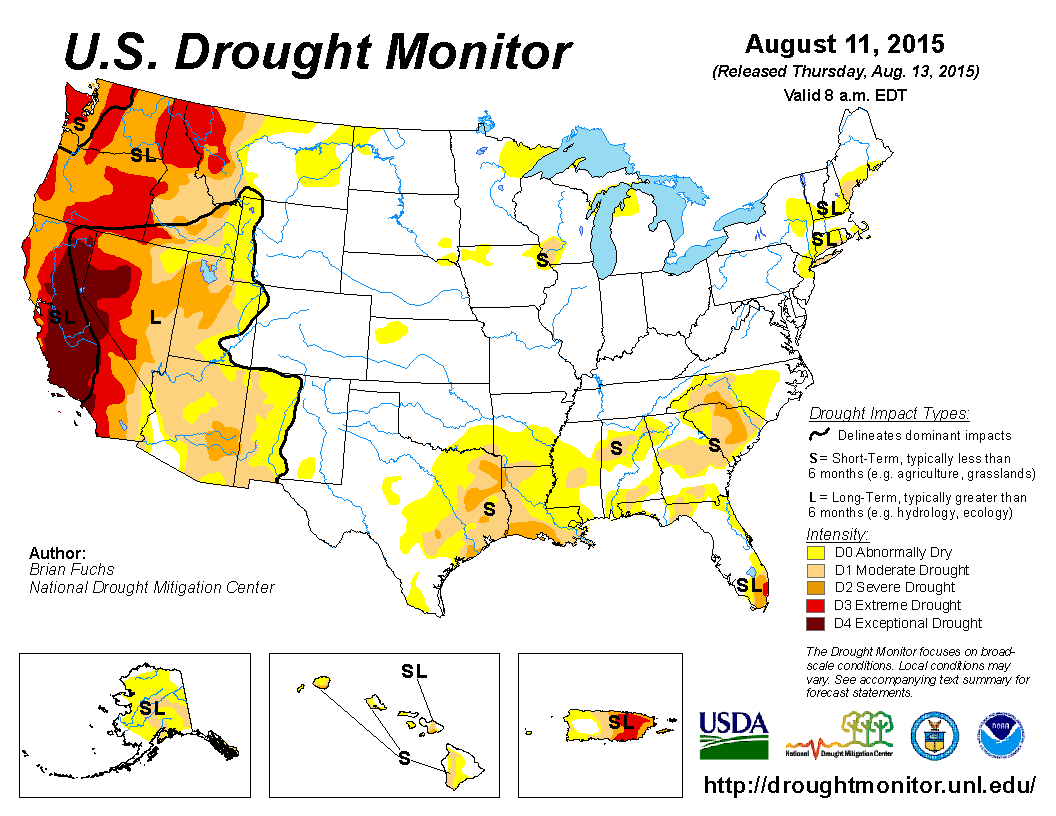PORT ANGELES — The North Olympic Peninsula’s drought status has been upgraded from severe to extreme.
The U.S. Drought Monitor announced the change Thursday.
The new categorization indicates regional impacts that include major crop and pasture losses and widespread water shortages or restrictions.
It is based on multiple factors including soil moisture, rainfall, river flows and groundwater availability.
The new Drought Monitor report was available to government agencies Tuesday, and on Wednesday, the U.S. Department of Agriculture (USDA) released a new disaster designation map listing 441 disaster counties and 172 contiguous counties in 13 states, including Jefferson and Clallam counties.
Jefferson is listed as a disaster county, while Clallam is included as a contiguous county.
The designations include counties covering most Western states — Washington, Oregon, Idaho, California, Nevada, Utah and Arizona, and parts of Montana, New Mexico, Texas, Oklahoma, Colorado and Kansas.
Inclusion on the list makes agriculture producers in that county eligible for federal emergency aid through the USDA Farm Service Agency.
Federal disaster aid programs are tied to Drought Monitor categories and values, said Brent Bower, senior service hydrologist for the National Weather Service in Seattle.
Drought monitor designations reflect average conditions and how things are playing out, Bower said.
“It’s a cumulative thing. This drought developed slowly,” he said.
The Peninsula drought began when a very warm and wet winter season resulted in a severely reduced snowpack, less than 14 percent in the Olympic Mountains and 7 percent in some areas.
By May, the snowpack was gone in most areas of the Olympic and Cascade mountains.
On May 15, Gov. Jay Inslee enacted a drought declaration for the state based on the lack of snowpack to supply rivers for the relatively dry summer months.
The next three months — May, June and July — were among the driest ever recorded in the region, according to the National Weather Service.
August is also shaping up to follow in the same pattern, Bower said.
“The drought exacerbated the lack of snowpack,” he said.
Bower said that while the state has experienced low snowpacks before and summer droughts, it has never experienced the two back-to-back before.
To compound the problem, clear skies and record-high temperatures have increased the demand for water just as the supply bottoms out, he said.
The drought also impacts the fire season.
On Aug. 5, the USDA announced that for the first time in its 110-year history, the Forest Service has projected that it will spend more than 50 percent of its budget to suppress wildfires across the nation, primarily in Western states affected by the drought.
Under the previous “severe drought” category, the impacts included some crop or pasture losses, common water shortages and imposition of water restrictions.
Impacts of the final category, “exceptional drought” includes exceptional and widespread crop and pasture losses and shortages of water in reservoirs, streams and wells, creating water emergencies.
_________
Reporter Arwyn Rice can be reached at 360-452-2345, ext. 5070, or at arice@peninsuladailynews.com.

